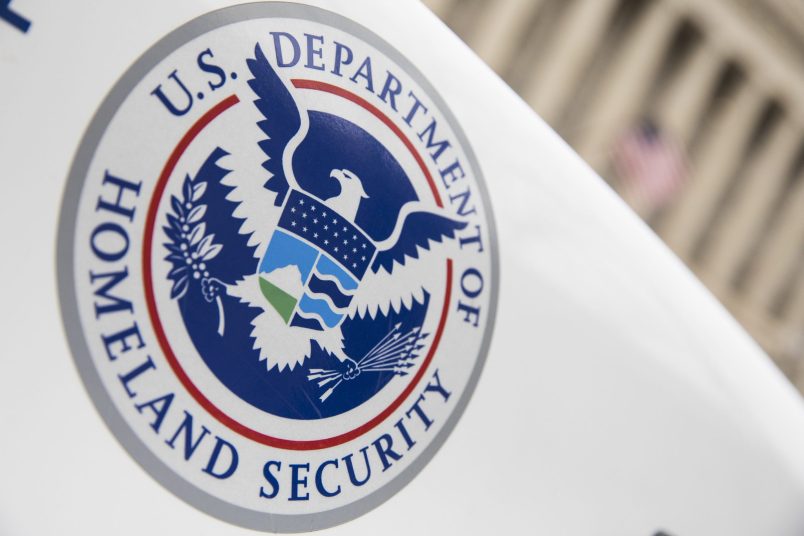The ongoing investigation into what happened to text messages from top Trump administration political appointees and Secret Service agents in the days after the January 6th insurrection has Congress, watchdogs and the media all scratching their heads.
But a recent court filing from another case may help illuminate how the text messages ultimately disappeared — and expose holes in the federal government’s data retention policies that DHS only recently scrambled to patch.
First, a recap: Ten days after the attack on the Capitol complex, four House committee chairs requested “all documents or materials that refer or relate to events that could or ultimately did transpire on January 6” from several federal agencies, including the Department of Homeland Security.
The department’s inspector general Joseph Cuffari requested written communications from around the attack from 24 Secret Service employees a month later.
But this summer, DHS revealed that the text messages from the Secret Service personnel and former top DHS officials Chad Wolf and Ken Cuccinelli had all been erased.
Meanwhile, the Department of Defense and the Army admitted to the watchdog group American Oversight that text exchanges between former top Pentagon officials had also been erased, including those of former acting Secretary of Defense Chris Miller, former Secretary of the Army Ryan McCarthy, and Kash Patel, an omnipresent right-wing operative who was at the time Miller’s chief of staff.
The Secret Service’s explanation of the deleted texts was especially baffling, with spokesperson Anthony Guglielmi explaining that, in the days after Jan. 6, “the Secret Service began to reset its mobile phones to factory settings as part of a pre-planned, three-month system migration. In that process, data resident on some phones was lost.” The Washington Post subsequently reported that individual employees were “responsible for appropriately preserving government records that may be created via text messaging.”
That the text messages were ultimately deleted seems to flout a number of federal records laws and guidelines. According to the National Archives, the records of all politically appointed officials are “permanently valuable records that will one day come to” the agency. These include “emails, instant messages, presentations, reports, spreadsheets, texts, voicemails” and more.
The situation has infuriated top Democrats in Congress: How could these messages be allowed to disappear following the insurrection, a watershed event that would almost certainly be investigated? On August 10, Senator Gary Peters (D-MI), chair of the Senate’s homeland security committee, sent letters to the heads of the DHS, DOD, Secret Service, and the DHS’s Office of Inspector General demanding answers.
Which all brings us to a few days ago, when an unrelated court filing emerged that may have shed some light on the situation.
On August 19, Immigration and Customs Enforcement admitted in court filings that it, too, had maintained a practice of scrubbing the cell phones of top officials within their department from 2019 to 2021.
The filings were published in response to a Freedom of Information Act lawsuit brought by American Oversight and the American Civil Liberties Union of Massachusetts, seeking records having to do with a criminal case in Massachusetts state court. Their suit sought emails and text messages from several senior ICE officials.
In the documents, ICE’s Deputy FOIA Officer Lynnea Schurkemp pointed towards a DHS policy directive issued on February 23, 2018, which, she said, “explicitly prohibits ICE employees from using technology platforms (i.e. chats, apps, SMS etc.) as repositories for retaining federal records,” but also instructed DHS employees to preserve records created through these channels themselves.
The policy directive itself instructs employees to:
“Write a memo to the file. Be sure to include Date and time of the communication; Type of communication (e.g., text, voicemail, telephone call); Context of the message or conversation (electronic messages); Participants; Subject; Details on any decisions or commitments (verbal communications); Corresponding threads that precede a communication and provide more background.”
So, basically, as of 2018, the responsibility for preserving text messages fell to DHS employees themselves rather than a centralized IT agency. It sounds a lot like the way the Secret Service reportedly approached its phone migration project.
“The text message retention issues that we’re running into in these cases are alarming and strikingly similar,” said Dera Silvestre, a spokesperson for American Oversight. “No matter the agency, text messages sent by federal employees often contain crucial information on what they are doing and why they are doing it.”
Schurkemp notes in her declaration that ICE’s Office of Information Governance and Privacy (IGP) Records and Data Management Unit (RDM) is responsible for organizing and holding electronic records but said that the OCIO itself has neither the policy or infrastructure to store data from employees’ cell phones.
Therein lies a disconnect: According to former DHS employees who spoke with TPM, outgoing employees weren’t expected to preserve their own records before the 2018 directive.
Similarly, the Secret Service instructed personnel to back up their phones’ data before the planned data migration project on January 25, 2021 — over two weeks after the insurrection — and stressed that employees were “responsible for appropriately preserving government records that may be created via text messaging.”
But the policy appears to have gone mostly unenforced.
Chad Wolf, former Acting Secretary of Homeland Security who oversaw the department during the insurrection, claimed on a recent podcast that he didn’t even know that his text messages were missing, and seemed unaware of his department’s 2018 directive.
“I turned in a laptop, a desktop, two cell phones, a bunch of secure equipment in my house, they were ripping it out the day of, on January 20,” he said. “They have all of it.”
“I was always told if you worked on anything in a government computer or cell phone, there are records or backups,” he continued. “They have it all. I turned it all in, as they directed me to.”
So, what the hell happened?
Even though there are various statutory requirements that federal employees retain their records, that doesn’t mean that the statutes are consistently enforced, said Freddy Martinez, a policy analyst with a focus on the Freedom of Information Act at transparency group Open the Government
“Enterprise IT systems, like when you work at a business, manage your device for you — they can back up and restore your device, which is super common basically everywhere except government,” he told TPM. “That doesn’t seem to exist in DHS anywhere.”
“It just means that any kind of adherence to federal records policies is just completely willy-nilly,” he said.
Records management isn’t exactly attention-grabbing work in the federal government, he says, so data retention policies get “lower and lower” on the list of priorities for most agencies — until something rockets it to the top.
“When you have very serious things like January 6, then you can’t piece together what happened,” he said. “Because everyone’s gone or their devices are wiped, everyone can just say, it wasn’t my fault or it wasn’t my responsibility. I think that’s kind of what’s partially playing out across the government.”

 Members-Only Article
Members-Only Article



